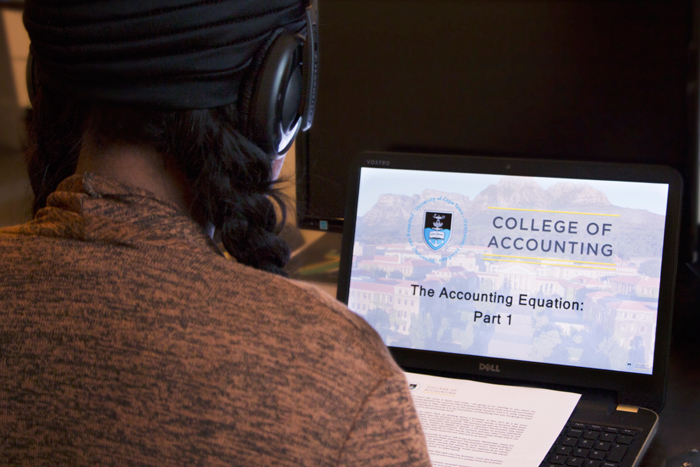Multilingualism meets open-access in trailblazing teaching intervention
19 July 2016 | Story by Newsroom
Jargon-laden subjects such as accounting are difficult to grasp in one's first language. But when your home language is not English, it's that much harder.
In a move to better equip their students, the College of Accounting has embarked on a unique blended learning project that is both multilingual and open-access.
The initiative, called LearnAccounting, is led by Associate Professor Jacqui Kew and seeks to explain key accounting concepts in understandable terms and in students' home languages.
“That's why I think LearnAccounting is one of the most exciting things we've ever done,” said acting head of accounting Associate Professor Goolam Modack of the multilingual nature of the project. Indeed, multilingualism was a major motivator in the Finance and Accounting Services Sector Education and Training Authority's (Fasset) decision to fund the project.
LearnAccounting has been in development since 2013, during which time it has amassed 11 650 registered users online at learnaccounting.uct.ac.za, more than half of which are not from UCT.
“Whether you are at UCT or not, LearnAccounting is a resource that is available to you,” said Modack.
Students drive learning process
The decision to make the project open-access speaks to its collaborative nature. It was developed in conjunction with academics from universities such as Wits and Walter Sisulu University. UCT now has a highly valuable resource, which is highly beneficial to everyone, says Modack.
“What this has shown is that it is possible to take the learning space to the student,” he explained. This allows students to drive the learning process and to take ownership of their studies in an environment that works for them.
But this project has demanded reflection in unexpected ways, too. It forces its academics, who would normally expand upon complex concepts during a full lecture period, to think about and refine their teaching methods and to condense concepts so they may be delivered in a seven-to-ten-minute video.
Jumpstarting the learning process
This open-access, blended learning video series is one of a number of initiatives that the college has implemented. Students come from diverse contexts and those in extended programmes as well as those in so-called 'mainstream' programmes need to receive proper support.
“We have students who are in the mainstream who will also perhaps need some of the support that the students in the augmented and extended EDU courses are getting,” said Modack.
This is crucial in courses as large as accounting. With a 2016 first-year class that is 1 200 strong, there is a danger of students slipping through the cracks.
First years, who are still in the difficult process of transition into the university, are the most academically vulnerable. Jumpstart was launched by Associate Professor Jimmy Winfield with these students in mind, identifying and inviting them to participate based on their first semester marks in Financial Accounting. These students may be similar in profile to those in academic development courses, but Jumpstart is not restricted to a specific cohort of students.
Doubling the throughput rate
These students have shown that they have potential and may even pass the second semester course (Financial Reporting I) with the minimum requirement of 50%, but they are in danger of not receiving the required 60% to progress Financial Reporting II (which takes place the following year). The intervention, which has essentially doubled the throughput rate of these students during the six years it has been running, has been hugely successful.
Jumpstart students are tutored by lecturers, attend weekly workshops to review their work and are guided by senior student mentors.
All these elements may seem disconnected and disparate, explains Modack, but when considered in light of the college's vision to be a centre of excellence and while acknowledging the evolving needs and experiences of the student body, it is clear how they fit together.
Story Kate-Lyn Moore. Photo Kate-Lyn Moore.
 This work is licensed under a Creative Commons Attribution-NoDerivatives 4.0 International License.
This work is licensed under a Creative Commons Attribution-NoDerivatives 4.0 International License.
Please view the republishing articles page for more information.










